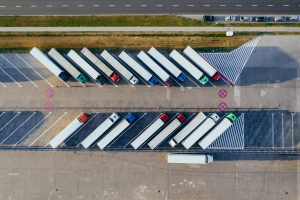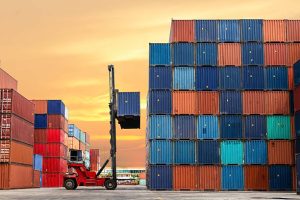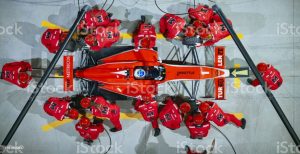Maximising Freight truck Utilisation 3
Scope For This Project
- This project will cover the evaluation of current processes, of transporting.
- Develop strategy for optimising client delivery process.
- Optimise truck utilisation in delivery.
- The project team will use a combination of market research, data analysis, and internal process evaluations to identify areas for improvement.
Table of Contents
Maximizing Truck Utilization For Increased Savings And Efficiency
Trucks play a critical role in the supply chain, connecting manufacturers, distributors, and retailers by transporting goods from one location to another. The use of trucks in the supply chain has numerous benefits, including improved delivery times, reduced costs, enhanced inventory management, and increased flexibility. This article will provide a comprehensive overview of why trucks are so important for the supply chain and how they can be utilized to maximize their potential.
Methodology
- The project team will use a combination of market research, data analysis, and internal process evaluations to identify areas for improvement.
- They will also engage with suppliers, stakeholders, and customers to gather feedback and implement changes.
Types Of Truck
Dry Van
This is the most common type of truck used for the transportation of goods. It is a fully enclosed trailer that is used for hauling a wide range of dry goods, including packaged foods, consumer goods, and electronics.

Flatbed:
A flatbed truck is designed with a flat, open trailer bed that is ideal for carrying heavy and oversized items such as construction materials, machinery, and equipment.

Tanker
Tanker trucks are used for transporting liquids and gases, including petroleum products, chemicals, and compressed gases.

Specialty Trucks
There are also several specialty trucks designed for specific types of goods, including livestock trailers for the transportation of animals, car carriers for the transportation of vehicles, and dump trucks for the transportation of loose materials such as gravel and sand

Use Of Trucks
Trucks are an essential component of the supply chain and are used to transport a variety of goods and loads. There are several different types of loads that can be transported on a truck, each with its own unique set of requirements and regulations
Types Of Truck Load
- Full Truck Load (FTL): This refers to a truck that is fully loaded with a large quantity of goods that are going to the same destination.
- Partial Truck Load (PTL): This refers to a truck that is partially loaded with smaller quantities of goods that are going to different destinations.
- Less-than-Truckload (LTL): This refers to a truck that is loaded with multiple small shipments from different shippers, each shipment typically being less than 5,000 pounds.
- Overweight Load: This refers to a load that exceeds the legal weight limit set by the government for trucks on public roads.
- Overdimensional Load: This refers to a load that exceeds the legal size limit set by the government for trucks on public roads, including width, height, and length.
- Hazardous Load: This refers to a load that contains hazardous materials and requires special handling, packaging, labeling, and transportation regulations.
- Refrigerated Load: This refers to a load that requires temperature-controlled transportation, typically for perishable goods such as food or medical supplies.
- Flatbed Load: This refers to a load that requires a flatbed trailer for transportation, typically for oversized or heavy items that cannot be loaded onto a standard trailer.
Emerging Trends In Trucking
- Increased Automation: The development of autonomous vehicle technology is rapidly advancing, and it is expected to have a significant impact on the trucking industry. Self-driving trucks have the potential to reduce labor costs, improve efficiency, and increase safety.
- Electrification: The trucking industry is increasingly moving towards electric trucks, which offer several advantages over traditional diesel-powered vehicles. Electric trucks are more environmentally friendly, have lower operating costs, and can provide a quieter and smoother ride.
- Last-Mile Delivery: With the growth of e-commerce, there is an increasing demand for last-mile delivery services. This has led to the development of new delivery models, such as crowdsourced delivery, which utilizes independent drivers to make deliveries.
Truck Utilization - Delivering
Despite their importance, many trucks often operate at less than 50% capacity while delivering goods. This can lead to inefficiencies and higher costs for trucking companies and manufacturers. In this article, we will discuss some of the reasons why trucks are often less than 50% full while delivering goods.
Unpredictable demand: One of the biggest reasons for trucks operating at less than 50% capacity is unpredictable demand for goods. For example, a trucking company may have estimated that a certain amount of goods will need to be delivered in a given week, only to find that the actual demand is much lower. This can result in a truck that is only partially loaded, leading to unused space and increased costs for the trucking company
- Space constraints: Another reason for trucks operating at less than 50% capacity is space constraints. Some goods, such as oversized or irregularly shaped items, may be too large or cumbersome to be fully loaded onto a truck. This can result in unused space on the truck, even if the demand for the goods is high.
- Multiple shipments: Another common reason for trucks operating at less than 50% capacity is the need to deliver multiple shipments to different locations. For example, a truck may need to deliver several small shipments to different retail stores, each with its own specific delivery schedule. This can result in a truck that is only partially loaded, as space may be reserved for the other shipments that need to be delivered.
- Lack of coordination: Another reason for trucks operating at less than 50% capacity is a lack of coordination between manufacturers, trucking companies, and retailers. Without proper coordination, trucking companies may find that they are delivering goods to retailers that have already been fully stocked, leading to unused space on the truck.
- Unfavorable delivery schedules: Another reason for trucks operating at less than 50% capacity is unfavorable delivery schedules. For example, a truck may need to deliver goods during off-peak hours, when demand for goods is lower, leading to unused space on the truck.
Optimization Truck Load
Optimizing truck loads can help to reduce costs, improve efficiency, and minimize waste in the supply chain. Here are some ways to optimize truck loads:
- Accurate demand forecasting: Accurately forecasting demand for goods can help to ensure that trucks are fully loaded and utilized to their maximum capacity.

Fleet of trucks parked in a trailer camp - Space optimization: Trucking companies can optimize the space on their trucks by using load optimization software.
- Route optimization: By optimizing delivery routes, trucking companies can reduce travel time and fuel consumption, while ensuring that goods are delivered on time.
- Collaboration and coordination: Collaboration between trucking companies, manufacturers, and retailers can help to optimise truck loads by ensuring that goods are delivered to the right place.
- Consolidation of shipments: Consolidating shipments from multiple manufacturers or retailers into a single truckload can help to reduce costs and minimize waste.
- Use of intermodal transportation: Intermodal transportation involves the use of multiple modes of transportation, such as trucks, trains, and ships, to move goods from one place to another.
In This Project
Our client was facing a significant problem with the utilization of their delivery trucks. Despite having a fleet of trucks, many of these trucks were only delivering goods at less than 50% capacity, resulting in a significant loss of profitability. The fixed costs of owning and operating the trucks were not reducing proportionally to the underutilization of the vehicles, making this a pressing concern for the company.
In response, our team was hired to address the trucking optimization issue and improve the efficiency of the delivery process. Our first step was to conduct a thorough analysis of the company’s data to understand the root cause of the underutilization problem.
Based on our findings, we made a series of recommendations to our client, including investment in more advanced technologies such as Electronic Data Interchange (EDI), Transportation Management Systems (TMS), Load Optimization Software, Fleet Management Software, and Route Optimization software.
With these recommendations implemented, our client was able to save a significant amount of money annually. The use of advanced technologies allowed for better planning and coordination of deliveries, resulting in more efficient use of the company’s trucks. This led to a reduction in fixed costs, lower fuel consumption, and improved delivery schedules, all of which contributed to the significant savings of $X Million annually, with annual savings of $Y Million.
Conclusion
In conclusion, our team was able to help our client address the truck utilization issue and optimize their delivery process. Through data analysis and technology investment, we were able to help the company reduce costs, increase efficiency, and improve their bottom line.
About the Author
 Vivek Sood: Sydney based managing director of Global Supply Chain Group, a strategy consultancy specializing in supply chains. More information on Vivek is available on www.linkedin.com/in/vivek and more information on Global Supply Chain Group is available www.globalscgroup.com
Vivek Sood: Sydney based managing director of Global Supply Chain Group, a strategy consultancy specializing in supply chains. More information on Vivek is available on www.linkedin.com/in/vivek and more information on Global Supply Chain Group is available www.globalscgroup.com
Vivek is the Managing Director of Global Supply Chain Group, a boutique strategy consulting firm specialising in Supply Chain Strategies, and headquartered in Sydney, Australia . He has over 24 years of experience in strategic transformations and operational excellence within global supply chains. Prior to co-founding Global Supply Chain Group in January 2000, Vivek was a management consultant with top-tier strategy consulting firm Booz Allen & Hamilton.
Vivek provides strategic operations and supply chain advice to boards and senior management of global corporations, private equity groups and other stakeholders in a range of industries including FMCG, food, shipping, logistics, manufacturing, chemicals, mining, agribusiness, construction materials, explosives, airlines and electricity utilities.
Vivek has served world-wide corporations in nearly 500 small and large projects on all continents with a variety of clients in many different industries. Most of projects have involved diagnostic, conceptualisation and transformation of supply chains – releasing significant amount of value for the business. His project work in supply chain management has added cumulative value in excess of $500M incorporating projects in major supply chain infrastructure investment decisions, profitable growth driven by global supply chain realignment, supply chain systems, negotiations and all other aspects of global supply chains.
Vivek has written a number of path breaking articles and commentaries that are published in several respected journals and magazines. Vivek has spoken at several supply chain conference, forums and workshops in various parts of the world. He has also conducted several strategic workshops on various aspects of supply chain management. He received his MBA with Distinction from the Australian Graduate School of Management in 1996 and prior to these studies spent 11 years in the Merchant Navy, rising from a Cadet to Master Mariner.
More information on Vivek is available on www.linkedin.com/in/vivek and more information on Global Supply Chain Group is available on www.globalscgroup.com
Related Posts
Click below to see related posts.

The Impact of Plummeting Shipping Container Prices Across Industries
Explore the far-reaching consequences of plummeting shipping container prices on diverse industries, revealing the intricate connections shaping global trade, supply chains, and economic landscapes.

Race Day Logistics: Intricacies of Pit Stop
Explore the race day’s heartbeat: the art of pit stops. Uncover the intricate logistics orchestrating split-second tire changes, refuels, and strategy adjustments that define Formula 1’s high-speed drama.

Mastering Travel Logistics in Formula 1 Racing
Discover the art of flawless travel logistics in the high-speed world of Formula 1. Uncover how precision planning and real-time coordination keep teams on track across the global circuit.

